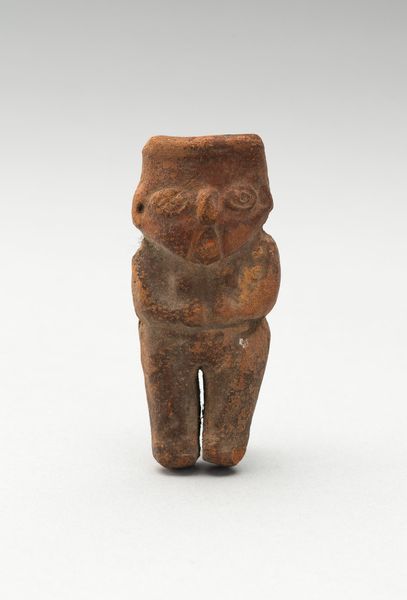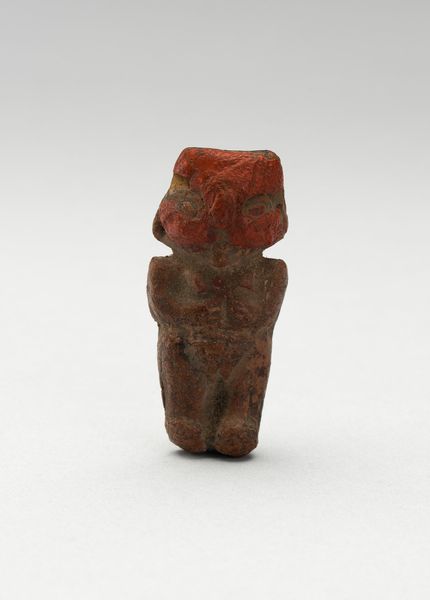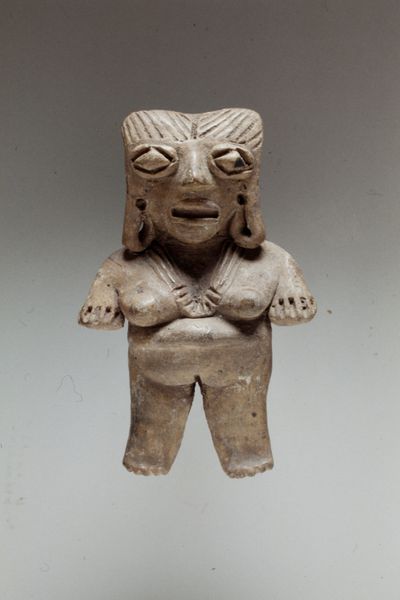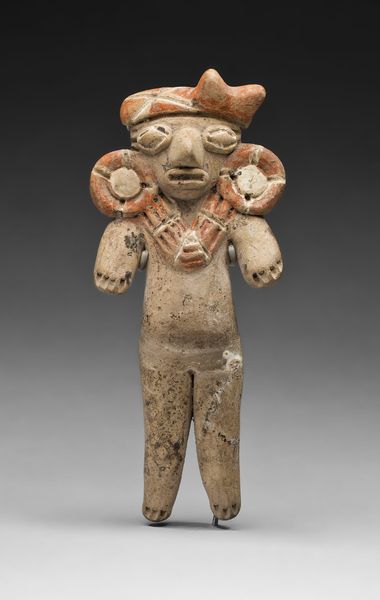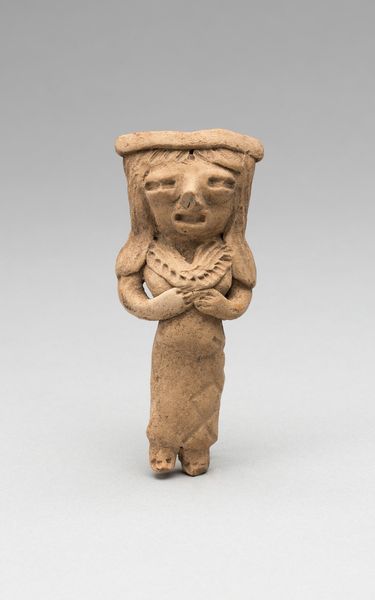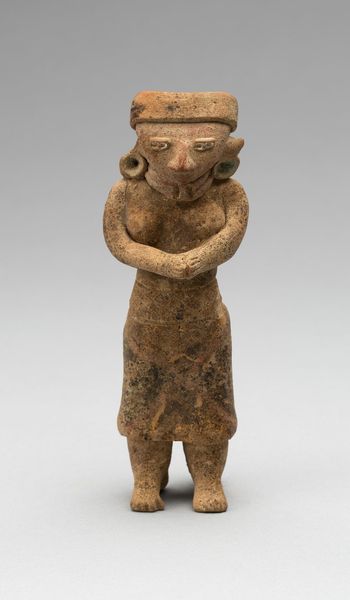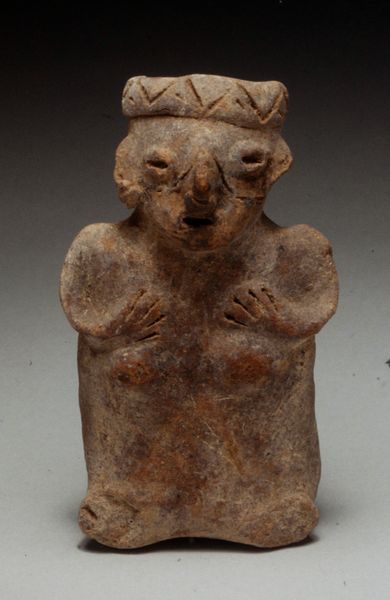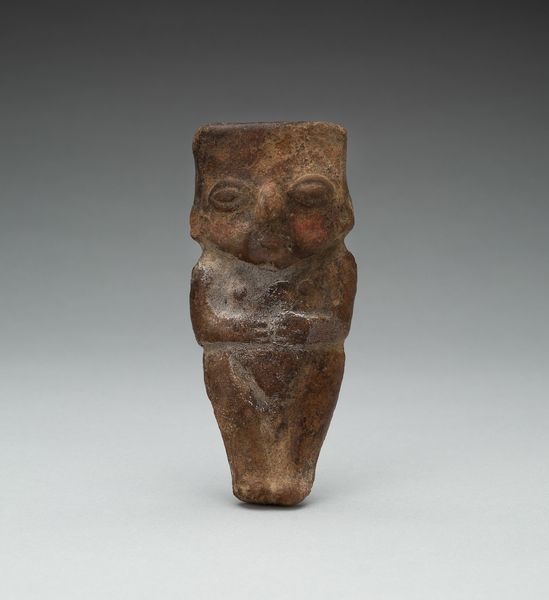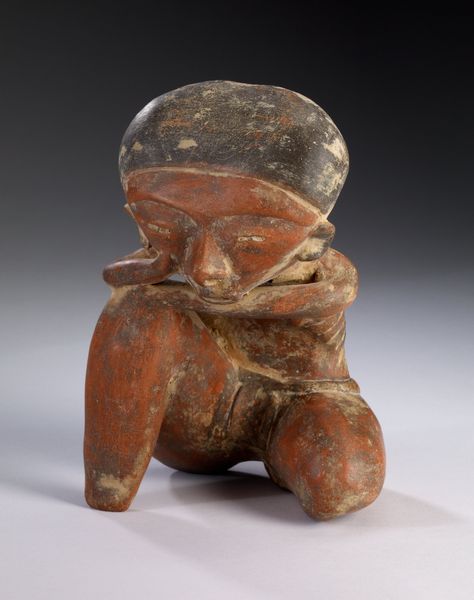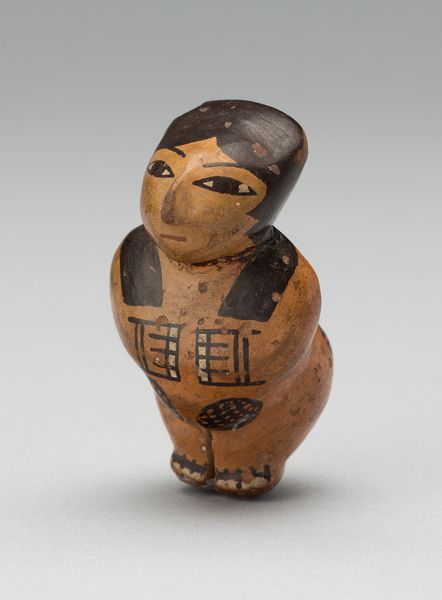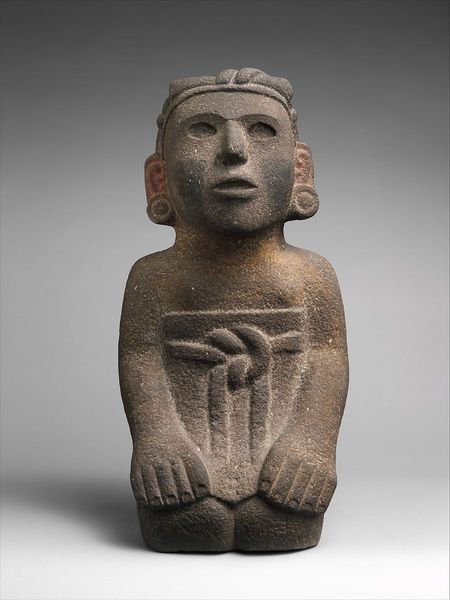
ceramic, sculpture, terracotta
#
ceramic
#
figuration
#
sculpture
#
terracotta
#
indigenous-americas
Dimensions: 7.9 × 2.2 cm (3 1/8 × 1 1/4 in.)
Copyright: Public Domain
Curator: Before us is a Moche ceramic sculpture, "Mold-Made Female Figurine," believed to have been created sometime between 100 and 600 AD. What's your first impression? Editor: There's a powerful presence emanating from it, though diminutive in scale. The earth tones and rough texture lend the piece an aura of ancient gravity. Curator: Absolutely. This piece reflects the Moche culture's sophisticated understanding of gender and the roles of women. Representations such as these were critical to Moche cosmology, addressing concerns around fertility, power, and societal harmony. Editor: Looking at its shape, one immediately observes the simplified cylindrical body supporting a disproportionately large head. This emphasis shifts the focus to facial features, in which each element holds particular importance in the composition, especially when the other attributes were sacrificed for simplification. Curator: The face is simplified but incredibly expressive. We see an asymmetrical representation with careful details near its mouth, a slight variation in the treatment of the eyes...these subtle gestures possibly reflecting individuality within a symbolic context. The figurine might be related to ceremonial life where feminine figures played pivotal roles. The state of her partial nudity should also be discussed in terms of how society relates it with status. Editor: It's interesting how this reduction, almost abstraction of human form, enhances the iconic status of the sculpture. The symmetry in the limbs provides the artwork with the foundation necessary to be deemed powerful and secure, in turn speaking to her strength of the era. Curator: Indeed. When viewed through an intersectional lens, this figurine becomes a site where art history, gender studies, and indigenous history converge. The ceramic material itself signifies an intimate connection to the land and a tradition of female craft, while serving to memorialize her and the role she played in everyday society. Editor: This close look also brings me back to my initial idea. Despite the apparent simplicity, every decision on proportion, form and texture elevates this humble object beyond mere representation, bestowing on her presence both primal and enduring. Curator: Considering the artwork's original cultural context helps us expand discussions beyond aesthetic assessment and prompts us to consider historical frameworks and biases often excluded from art discussions. Editor: Precisely. When considered structurally, though, the reduction creates an immortal impact.
Comments
No comments
Be the first to comment and join the conversation on the ultimate creative platform.
